-
Membership
Membership
Anyone with an interest in the history of the built environment is welcome to join the Society of Architectural Historians -
Conferences
Conferences
SAH Annual International Conferences bring members together for scholarly exchange and networking -
Publications
Publications
Through print and digital publications, SAH documents the history of the built environment and disseminates scholarship -
Programs
Programs
SAH promotes meaningful engagement with the history of the built environment through its programsMember Programs
-
Jobs & Opportunities
Jobs & Opportunities
SAH provides resources, fellowships, and grants to help further your career and professional life -
Support
Support
We invite you to support the educational mission of SAH by making a gift, becoming a member, or volunteering -
About
About
SAH promotes the study, interpretation, and conservation of the built environment worldwide for the benefit of all
The Journey To Displacement
Aymar Mariño-Maza is the 2018 recipient of the H. Allen Brooks Travelling Fellowship. All photographs are by the author, except where otherwise specified.
In Cat Ba, a small island off the northern coast of Vietnam, I nearly died. I was visiting a cave in the island’s national park, a well-trodden tourist destination, when the inner Indiana Jones I’ve been letting slowly out of her cage over the last year got the better of me. Disregarding the clearly illuminated walkway, I took a turn down a dark path. I managed a few confident steps, feeling the earthen ground below my beat-up sneakers. Then the unexpected happened. I lowered my foot once more toward the ground, but this time nothing caught me. My foot fell into emptiness, taking my body down with it. I tried to counterbalance my weight on the other foot, but again, I found nothing. I was freefalling into absolute darkness—like Alice in Wonderland, but without the talking animals. By the time I realized what had happened, I was on my back, five meters into what should have been my death and a few inches from a Machu Picchu rock formation that ought to have been my deathtrap. But, thankfully, I’ve still got a few lives left in this body, albeit one with a few too many scars to prove it.
The moment I took a step into the void, the moment the ground I’d been expecting was no longer there, I realized the extent to which I take space for granted. Not once did the possibility of losing the ground below my feet cross my mind that entire day, that week, or even that year. But the moment I lost it, I realized this was not the first time I’d had that feeling. A few times in my life, I have come face-to-face with the possibility of not having a roof over my head, and it gave me the same sinking feeling in the pit of my stomach. The interesting bit, though, is not the feeling itself but how quickly I forgot it. Many of us have experienced this. We adapt to our surroundings, create expectations about the environment we live in, and we accept certain possibilities as facts. Like a manuscript read over and over only by its author, space is riddled with mistakes, gaps, and inconsistencies. It takes a fresh pair of eyes to notice. As the saying goes, four eyes see better than two.
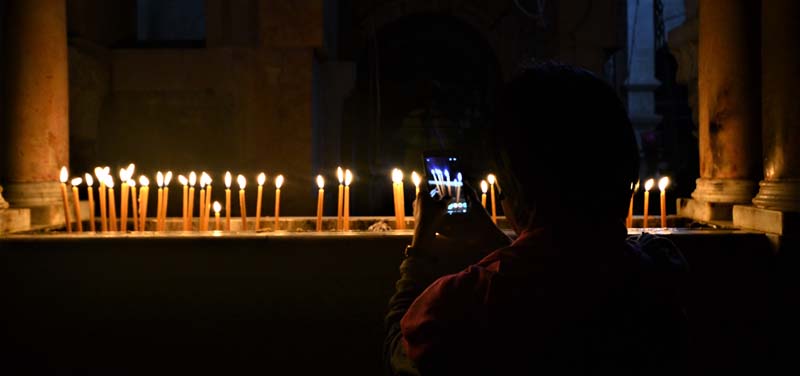
Figure 1: Visitor taking a picture in the Holy Sepulchre, Jerusalem
I was once told by a professor that there are only two types of people who look up at buildings while walking through a city: tourists and architects. Sadly, from what I can tell, he might have been right. Walter Benjamin once said that architecture “is consumed by a collectivity in a state of distraction,”1 and writers like Voltaire, Zola, and Dickens have always alluded to the blindness with which people move through the spaces they inhabit, unaware of the deep impact their surroundings have on their psyche.
Now, no one has ever asked me why I chose to study displaced people. It is such a trendy topic nowadays that my interest seems self-explanatory to everyone I meet. It would be easy to say that my interests in the subject are humanitarian or that I believe it is a global crisis that needs to be better addressed. These are both true, of course. But there is another reason underlying my deep interest in displacement studies. I believe displaced people are another type of person you see looking up at buildings as they walk through streets. Of course, I mean this metaphorically. Displaced people combine the newborn curiosity of the tourist with the creative potential of the architect. This combination has the potential to significantly impact space. For good or bad, that depends on the effort taken to positively integrate existing values with new ones.
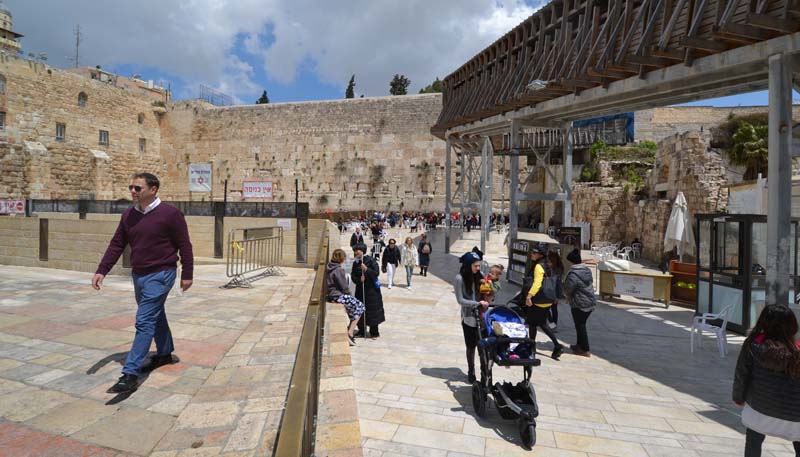
Figure 2: Layers of division mark the strangely open Western Wall Plaza in the Old Town of Jerusalem. In the background, the Western Wall marks the edge of the Noble Sanctuary (also known as the Temple Mount), while in the foreground the barrier divides the area for female (right) and male (left) worshipers. Floating above, a walkway gives access to the worshipers entering the Noble Sanctuary.
My aim in this article, as it has been in this project as a whole, is to analyze the spaces of displacement from a historical perspective. Not only can it help us to better understand the experience and role of displaced people within contemporary society on both global and local levels, but because it can also help bring to light many aspects of the role of space for humanity as a whole. Because it should not be just a select few who look up while walking.
As I write this text, my year-long fellowship is reaching its bittersweet end. Twelve beautiful months that have opened my eyes and my mind in more ways than I thought possible. I have to thank the Society of Architectural Historians for that. But more than the SAH, I have to thank history itself and by that, I mean the writers of history, the builders across that history, and the people who lived, preserved, and then, like a parent dropping off a child on the first day of school, passed that history into my hands.
And yet, though I hate to say it, the climax really is anti-climactic. I’ve finished this journey only to find that I’ve reached no final destination. So, in lieu of a description of any such unattainable destination, what I will do is take you on a journey, the one I was given the chance to take: through the world of books, of buildings, and of other peoples’ memories. We’ll call it the journey of displacement. We will wind across cultures, dig our way through voices both known and unknown, dip into my memories, wade across a larger-than-life history, and struggle up the hills of ideas both of us will feign to fully understand. We won’t reach the final destination we were hoping to reach. But, as the movies always tell us, it’s not about the destination, it’s about the journey.
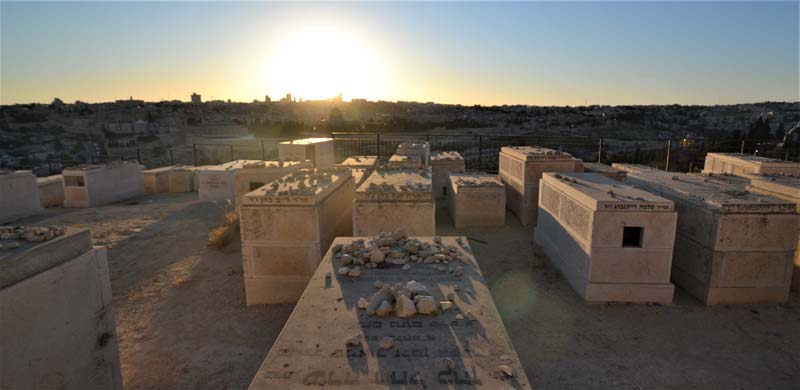
Figure 3: Tombs on the Jewish cemetery on the Mount of Olives overlooking the Old Town of Jerusalem
Part I
The journey of displacement doesn’t begin with movement. It begins farther back, at a moment much harder to pinpoint but one of so much power that it doesn’t go unnoticed for long. The journey begins with dissent.
On October 31, 1517, Martin Luther nailed his Ninety-five Theses to the Archbishop of Mainz. This event marks the start of the Protestant Reformation, which led to the forced conversion and displacement of Protestants who were subsequently persecuted by the Catholic powers. Though a dramatic and memorable moment in history, the moment Luther mailed his theses is not the one I am interested in here. The beginning of our journey came before pen was put to paper, before the theses were discussed, before the clandestine meetings were held, and before people even knew there were others who felt as they did. Before the written word, before the spoken word. The journey begins with the fledgling: the very thought of dissent.
In most post-apocalyptic movies, there is a common trope: the lone wolf doesn’t survive for long. This is a not-so-subtle commentary on the inevitability of society, the emotional and structural importance of community, and the all-too-obvious statement that anarchy is dead. But in real life, where the crowd attracts attention to itself, the lone wolf is able to slip by unnoticed. We can apply the same rule to a thought. Yes, a thought is dangerous, but only when it is expressed, be it through actions, words, or a mailed envelope. Unless that happens, a thought may be daring, mind-blowing, extraordinarily revolutionary, and yet, utterly and hopelessly insignificant. Once the lone wolf howls, the footsteps of his followers can be heard. And that sound is dangerous. That sound marks the second leg of our journey: when dissent becomes spatial.
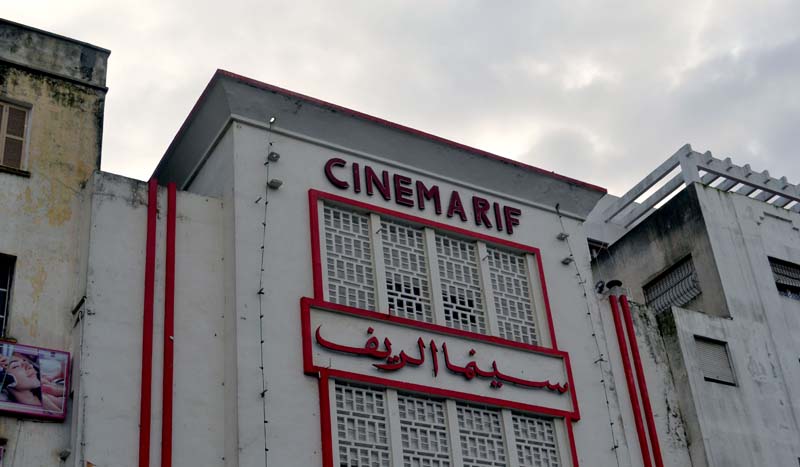
Figure 4: The bold red of the Cinema Rif facade in the center of Tangier. The city was once the historical hub for criminals, artists, and radicals in Morocco. It also served as a hub for the post-WWII counterculture movement known as the Beat Generation. Though both the movement and the city’s character have long since evolved away from what they once were, traces of that countercultural essence can still be found in the city. One such example is the Cinema Rif, a focal point for an easily identifiable group of artists, thinkers, and hipsters that one does not see so often in the rest of Morocco.
Part II
Elias Canetti opens his book Crowds and Power with the following line: “There is nothing that man fears more than the touch of the unknown.”2 That is, the author writes, until the touch comes from within a crowd. When one has surrendered to the crowd, touch loses its invasive feeling, its danger. “The more fiercely people press together,” Canetti writes, “the more certain they feel that they do not fear each other.”
Of course, anyone who has been to a protest knows that a crowd can be one of the most dangerous places to inhabit. Within the heightened state of alert we currently find ourselves as we watch the rapid spread of the coronavirus, it is easy to immediately think of the danger of infection when imagining a crowd. When the first mentions of the outbreak were being broadcast, I had just arrived in Bangkok. It was Chinese New Year. Like every other tourist in the city, I bought a face mask and, foolishly thinking it could prevent my contamination, stepped boldly into the crowd. It was the kind of crowd only Southeast Asia knows how to make, the kind where I could swear I heard my USDA-grade personal bubble pop. Even with the limited information I had about the coronavirus, I still felt the unnerving prickle of fear as I inched my way through the crowd of like-masked people. But it isn’t the danger of viral contagion from within I’m talking about, but that of physical, social, and ideological attack from beyond. Let me explain.

Figure 5: Cooks serving food to the crowds at an outdoor food stall in Bangkok’s Chinatown on Chinese New Year
In his account of the 1991 coup d’état in Moscow, David Remnick recounts the words of Nadezhda Kudinova, a factory seamstress taking part in the human barricade around the White House, the democratic stronghold during the coup. Her words tell it all: “The people in the White House ordered us to step aside, not to jump on the tanks if they came, but we knew that if the tanks came, we would step in front of them.”3 How many times in your life have you felt that? I can tell you with an utter lack of shame that I never have. She didn’t say I knew, but we knew. Not only was she telling Remnick that she would lay down her life, but that the crowd would. Dissent had gone from the unspoken thought of an individual to the life-blood of a collective, literally and not just symbolically keeping them alive.
Crowds occupy space. A collective of people is a collective of power and, like all powers, it demarcates its space. The people standing alongside Nadezhda weren’t standing aimlessly; they were defending their space. They were defending the White House, the architectural icon of their ideology, their hopes, and their dissent. Lewis Mumford, in his near-biblical text, The City in History, describes the historical evolution of nascent power. His argument is that power needs to spread in order to survive. One of the many forms in which power grows is spatially. The more space you control, the more powerful you are seen by weaker powers, and the more dangerous you become to those with more power than you. Power is like a hot potato: it does not last long in anyone’s hands.
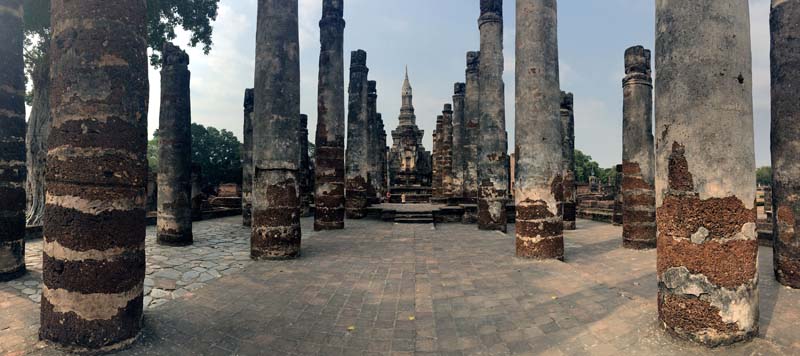
Figure 6: Ruins of a temple at Sukhothai, the first capital of the kingdom by the same name, which ruled the region from 1238 BCE until 1438 BCE. It was eventually annexed by the Ayutthaya Kingdom, then overthrown by the Burmese Konbaung dynasty, then the Rattanakosin Kingdom, leading to what we now know as Thailand. The city currently stands as a historical monument of a moment in a long history of wars over the territory.
Once a group marks out a space for itself, it must be ready to defend it. Groups that dissent from a majority will be attacked, either physically, ideologically, or financially. Because if there is something humanity knows how to do, it is to persecute. From the schoolyard bully to the office gossip to the totalitarian ruler, there is a culture of persecution in every social circle, in every hierarchy, and even in every household. It even happens unintentionally by people bettering themselves, because if one goes up, another usually must come down.
Sometimes the defense is unprepared, the barricade is unstable, and the stronghold is easily taken. Sometimes it stands strong, defiant. Either it doesn’t have enough power to remain or it does—for the time being. This is where the story of displacement as people commonly know it begins. Far too late in the story, if you ask me. I believe it begins at the moment difference becomes a collective. Because, it is at that point in dissent’s life that some form of persecution becomes inevitable. Power will always seek to eliminate its competition, either by destruction, absorption, or expulsion.
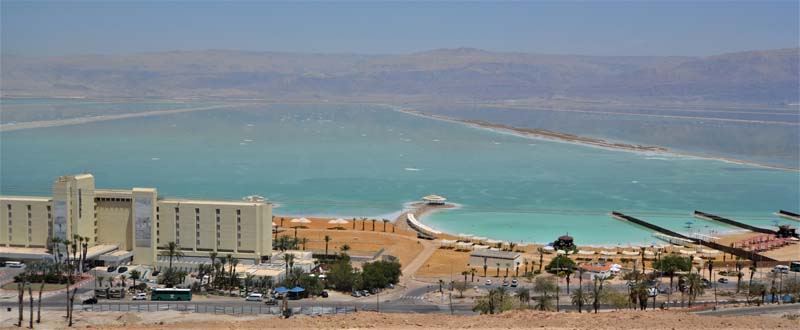
Figure 7: In the foreground, resorts frame the Israeli coast of the Dead Sea, essentially privatizing access to it. The Israeli government built a national water conduit that redirected water away from the Jordan River. Jordan and Syria responded by diverting the course of the Jordan and Yarmouk rivers. This competition has caused drops in sea level and irreversible ecological repercussions for the region. The sea has been partitioned for desalination and commercial purposes, in an embattled attempt at returning some level of ecological stability to the region—but even this is being politically and economically driven and halted by the many stakeholders in this space.
What does this spatial power look like? A barricade of bricks pulled from the street, furniture pulled out of homes, road signs pulled off their poles, mattresses, scraps, dumpsters, and reckless courage—an image out of a Victor Hugo novel. A hill adorned with small stone houses, whitewashed, blue-shuttered, flocked with a scattering of cattle, and at the crest of the hill a single proud structure, a steep pitch rising high over the small world below it, and the sound of a bell ringing out past the confines of that small community, as peaceful as it is dangerous. Another layer of paint brushed on in the dead of night, a bridge that won’t fall, a flag that rises over and over from a sea of bomb craters. A painting on a wall, a fortress, an underground cave, a temple. The truth is that there is no human-built structure beyond the field of power.
So spatial manifestation comes at a cost. The power of groups, like everything with a pulse, has a lifespan. These lifespans, like those of flowers or Buddhists, are cyclical. They come and go, and then they come again in different forms, under different names. The form a power takes depends on the context in which it reincarnates. It is when the flower is in its most beautiful, most open, most fragrant state, that the florist cuts her at the stem and sells her off.
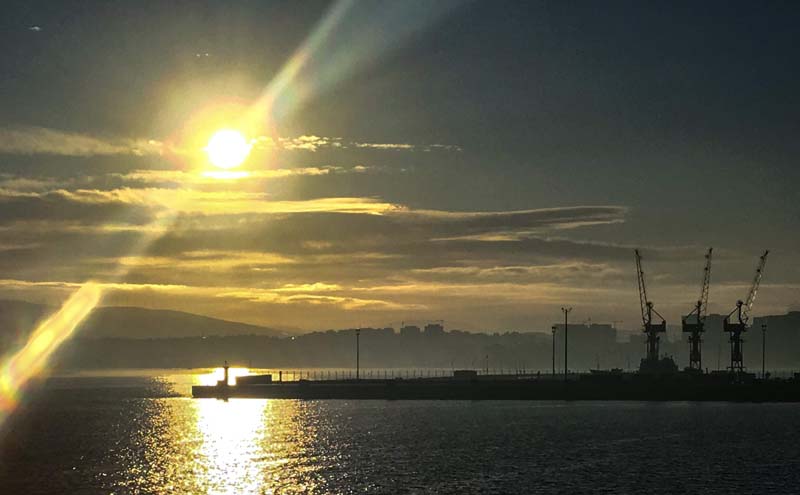
Figure 8: Port of Tangier, Morocco
Part III
The sea between Tangier in Morocco and Algeciras in Spain is ready to start a fight the day we set sail from Africa. The waves cut short-lived ridges up over the horizon and, with each cut, my stomach does a back flip. The clouds hang low over the water before us, a sight I take as a warning. But my fear is well confined in the pit of my stomach. This is no real danger here. The Spanish passport safely stowed in the front pocket of my backpack, the smartphone in my hand, and the millennial gusto seeping from my every pore are the waving flags of my parachute, that safety net I cannot fully appreciate until the moment it is gone. But even then, I am quick to forget the moment it returns.
In Cat Ba, I fell. Then I got up. I raised my scratched and bruised body out of the hole and back onto solid ground. I was lucky. But what of those who are not so lucky? What of the times when the foot doesn’t find ground and just keeps falling? When space itself doesn’t grant you support, what is left?
The noted Polish journalist Ryszard Kapuściński wrote that “a nation that does not have a state seeks salvation in symbols.”4 Can the same be said of a group of people? Canetti coined the term “crowd symbol” to describe collective units that stand in for the crowd and thus mark a sense of unity among people. The sea, he says, is the crowd symbol of the British people just as the exodus is the crowd symbol of Jewish people. Exodus, in its innumerable reincarnations, is the crowd symbol of the displaced from all across history and all across the globe. It is a humble symbol, burdened with the memory of the forces that led to a need to escape. It is a violent symbol, bursting with memories of death, abuse, and humiliation. But it is also a powerful symbol, if only as an image, of a people, of a crowd, bound together so intimately, moving as one, and desperately depending on each other to survive.
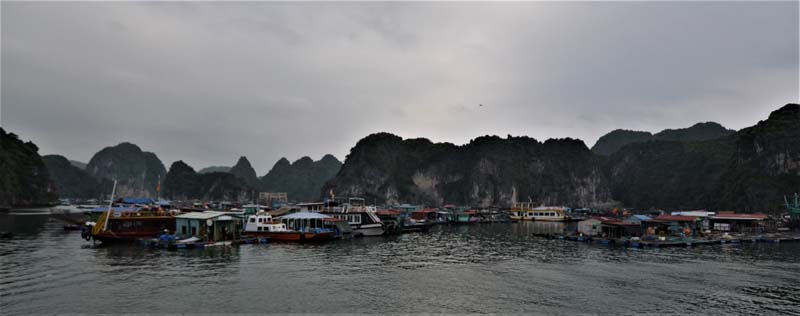
Figure 9: Floating markets in the Ha Long Bay. The inhabitants of the floating villages depend on the cooperation that goes on at these markets, where they are able to trade their goods for basic necessities. Though seemingly separated from the mainland, these communities have strong economic and cultural ties among themselves and with the mainland.
So, the exodus commences. When studying the spatial expression of displacement, it is easy to focus on the before and after pictures. Studying the process of movement is much harder because documenting the spatial traces of migration is like trying to document the breadcrumbs left behind by Hansel and Gretel. There are, however, some spatial markers of migration: its vehicles. Trains stuffed with bodies pressed one against another; rickety boats where slave masters toss food below deck like they are feeding chickens; the carriages, trucks, and carts of people making their way across deserts, across forests, across Siberia itself. In his novel Imperium, Kapuściński tells the horrific tale of a general who was transported to a Siberian camp locked in a wagon-coffin that would topple over and be dragged for miles by the horses before anyone noticed. This, the general reminisced, was a privileged mode of transportation during so many Soviet purges.
Apart from these objects, we have another spatial element we can analyze, but it isn’t always tangible the way architects might wish it to be. It is reminiscent of the Songlines of the Aboriginal peoples of Australia, those networks of walkways that transverse the continent, linking icons, monuments, and communities as isolated as anything in the Outback is wont to be. But the Songlines are spatial traces of spiritual migration. Imbued though they may be with the historical weight of a displaced people, they themselves are not the migration lines of displacement. But other examples exist, notable among them is the Trail of Tears, the path taken by the Native Americans forced out of the Southeastern United States and onto reservations west of the Mississippi River; the Holocaust trainlines, the tracks of the Deutsche Reichsbahn that were used to deport Holocaust victims to Nazi-run concentration camps; and the Central American migrant caravans, the paths along which hordes of migrants flee gang violence by migrating north toward the U.S.–Mexico border.
Displaced people leave traces as they move. Footsteps. But in the study of history the ones that matter most are those that survive the first rainstorm, and the second, and the hundredth. These are the traces carved into the collective conscience of future generations. As iconic as Hansel and Gretel’s breadcrumbs and just as difficult to analyze spatially, the paths of forced displacement we previously mentioned are these very traces. They serve as the icons of some of the most significant events in human history. And yet they, like any other space, are only imbued with sociological meaning by the people who write, read, and interpret history. And a collective conscience is like a great history lesson: the teacher will always be biased, and the student will always be easily impressionable and just as easily distracted. A collective conscience is a tricky thing to study, but it is inevitably where we must turn if we wish to understand the spatial significance of displacement.
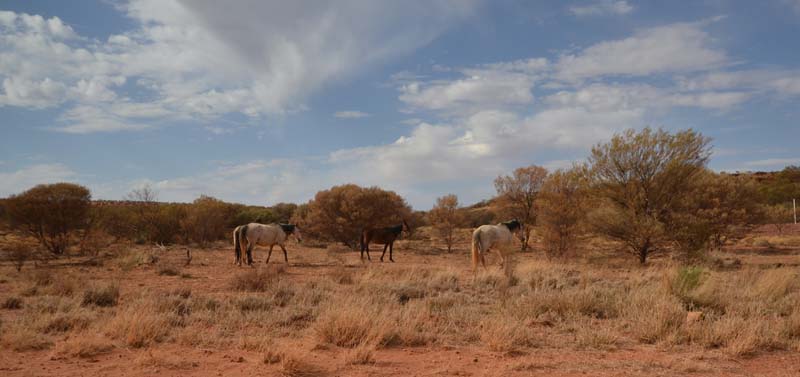
Figure 10: Wild horses in the Outback, somewhere between Alice Springs and King’s Canyon in Australia’s Northern Territory
Part IV
So, we stop moving. What comes next?
When I was growing up, my family lived with a cat. I’d say we owned a cat, or that she was part of our family, but the actual situation was more like unrequited love on our side that quickly turned into emotionless cohabitation. She came to our house one day when my father was grilling some sardines and she never left. We never knew her age, why she didn’t have front claws, or where she came from. We called her Camila, but she never responded to the name. The only thing she responded to was someone taking a broom out of the closet, at which point she would disappear as quickly as she had appeared. We never figured out why she did that either, but it added to the hypothesis we had been forming. Camila made herself at home despite our presence. Every night when we went to bed, she would hop on one of our beds and get to work. She stepped lightly over the bed, gingerly pawing at limbs covered in blankets. She was slow about it. She had the unhurried strategy of an expert. She went up and down the bed like that, teasing, feeling, judging. Judging what? I’ll never know. At some point she would make a decision. Then came the trickiest part. In an almost imperceptible way, she raised the intensity of her pawing, pressing out and down, digging herself the space she needed. When she was done, she would curl her body into a circle, perfectly filling the space she’d made herself. She was so good at her work that some nights I didn’t realize what had happened until I was halfway off the bed and she was already purring me into submission. Other nights I wasn’t so willing, so I pushed back. Either way, by the time I woke up she was gone.

Figure 11: Horses find relief in the sliver of shade below the red stone gorge walls of the Siq, in the ancient city of Petra in Southern Jordan
Sometimes, victims of displacement have restless feet. Get comfortable, but don’t stay comfortable. Be where you are but remember where you come from. And sometimes victims of displacement are victims of so much more. That little circle of space carved out within someone else’s space, no matter how small it is, is still in someone else’s space. Some victims of displacement are forced to have restless feet, caught between a space that is no longer theirs and a space that will never be theirs. They can paw their space out, maybe even fall asleep, but the feeling that they will be pushed off the bed is hard to get rid of. Putting down roots has a whole new level of complexity within this psychological frame.
Simon Weil said that “to be rooted is perhaps the most important and least recognized need of the human soul.”5 But how do we root ourselves, as people, as a community, as a society? I’ve tried to give a few examples of just this act in the previous articles, examples of peoples that have attempted just that, under different circumstances, through different means, and to different degrees of success. But throughout all those examples, one aspect is constant: the sheer lack of constancy. One thing is certain: how people root themselves will always be complicated by the inevitability of change. No space or people remain the same for very long, so rooting oneself means constantly uprooting and rerooting. In the day-to-day, this constant process can go on unnoticed, or at least typically undervalued. New buildings replace old ones, new groups of people move in to replace others, businesses close and others open, and until we realize this all flows into a single current, we do not usually give the process of change too much thought. Once we realize it, however, the flow of that current suddenly feels more like an avalanche. We see everything in relationship to that current. At that point, we might begin to see some of those links that can be drawn between the experience of displaced communities and those of humans simply living within a constantly evolving space. At that point, though, it might be too late to start looking up.
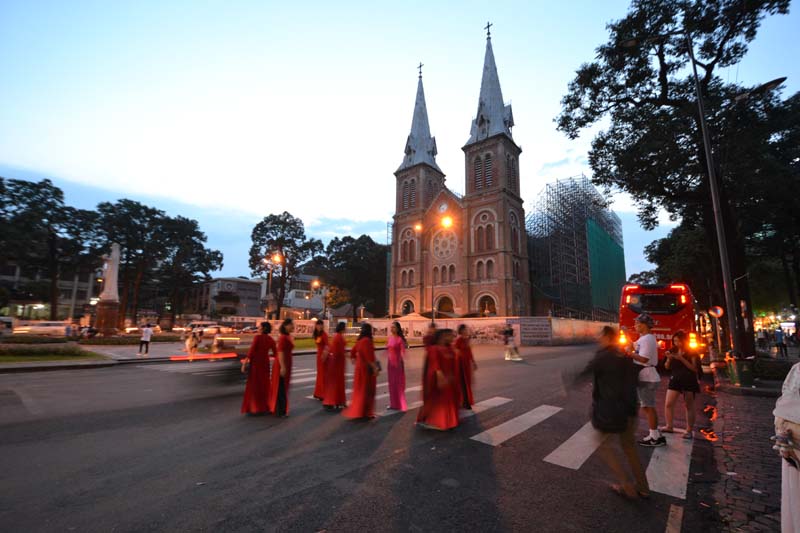
Figure 12: Women posing for pictures in front of the Notre Dame Cathedral under construction in Ho Chi Minh City's District 1. Originally constructed during the French colonial period in Vietnam, now it stands as a reminder of the occupation period and a symbol of the Catholic minority in Vietnam.
Postscript
I recently read a quote by the writer Michael Jackson that stuck with me. “Life,” he wrote, “cannot be pressed into the service of language.” Any attempt to tell a story is bound to be a summary, an abbreviation, a SparkNotes butchery. Because language, and the concepts that language has defined, cannot explain a story fully. Life, thankfully, far exceeds what we have been able to describe. And that’s the only kind of conclusion I’m comfortable writing down at this point. Today, we’ve taken the journey to displacement. Next month, we’ll see if we can’t take the journey away from it.
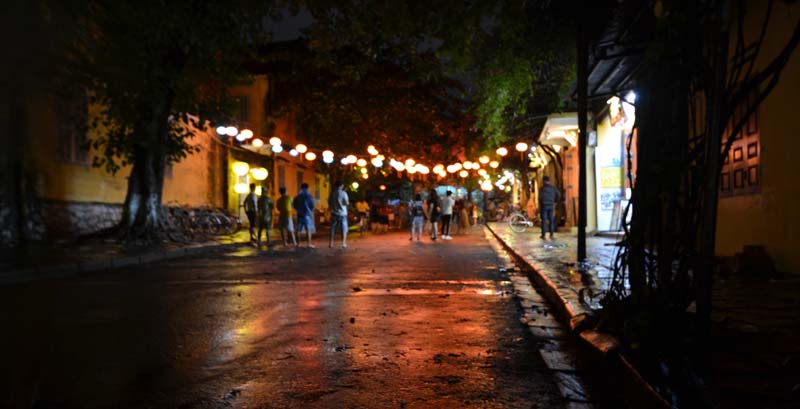
Figure 13: A street in Hoi An, Vietnam, at night



Leave a commentOrder by
Newest on top Oldest on top